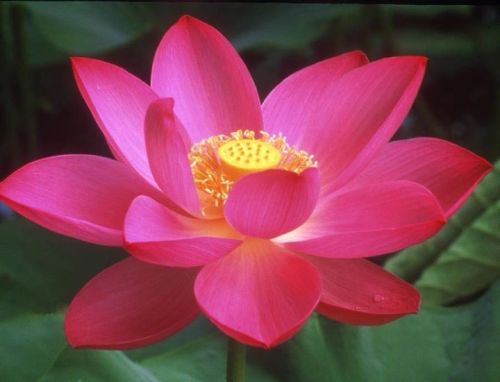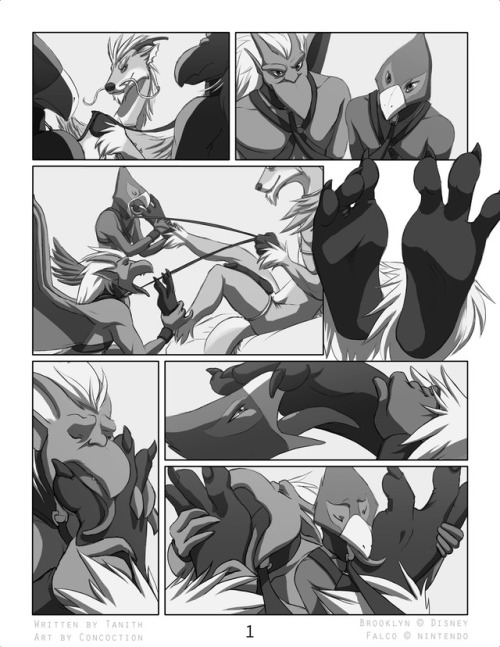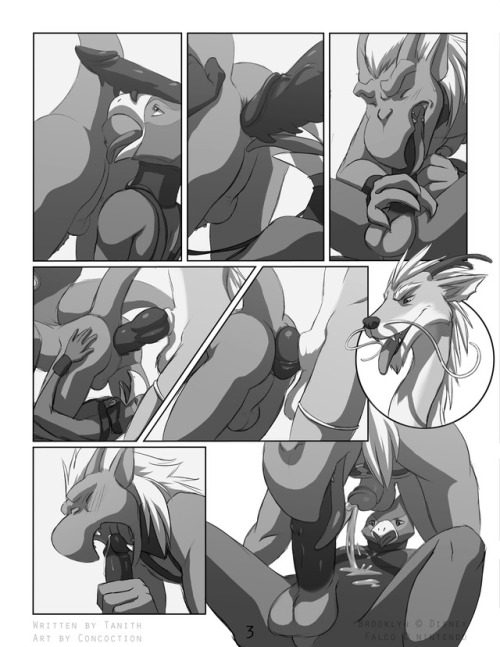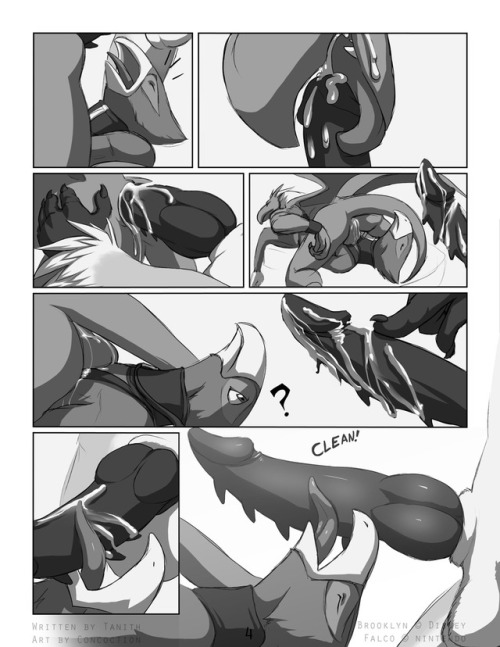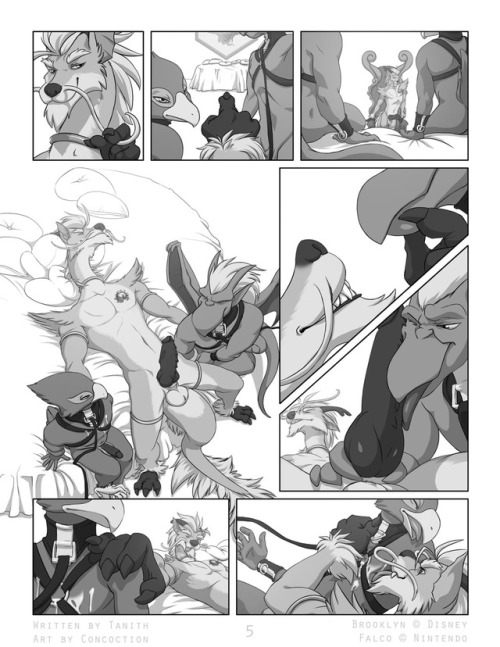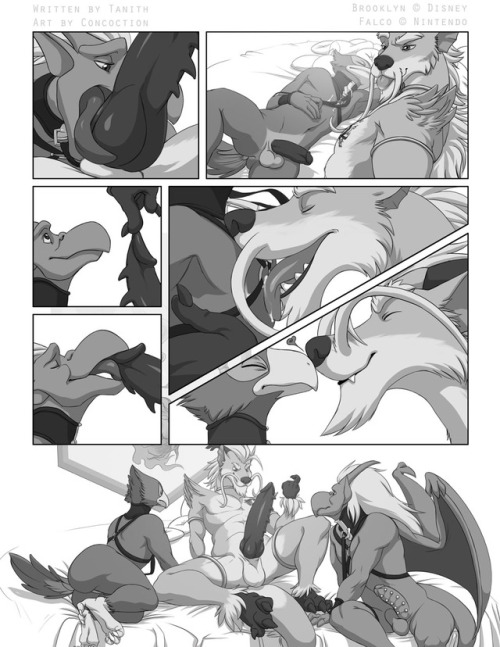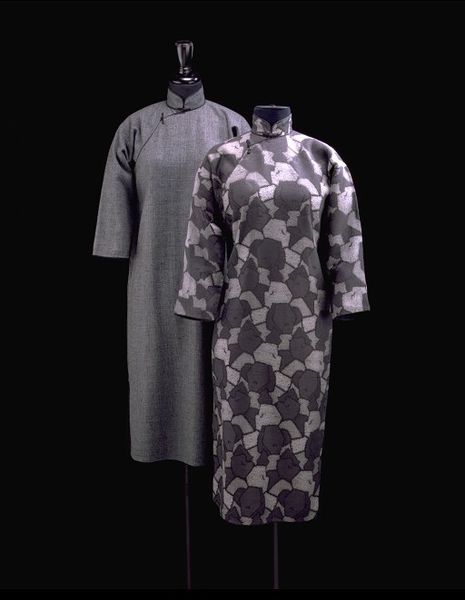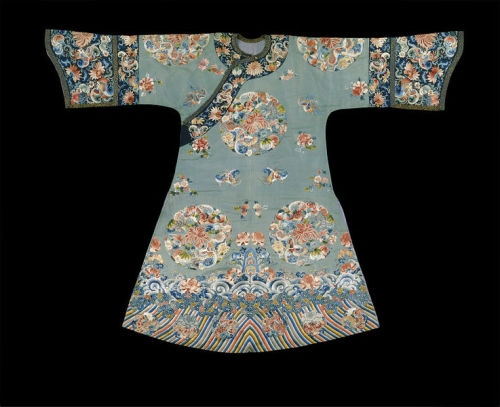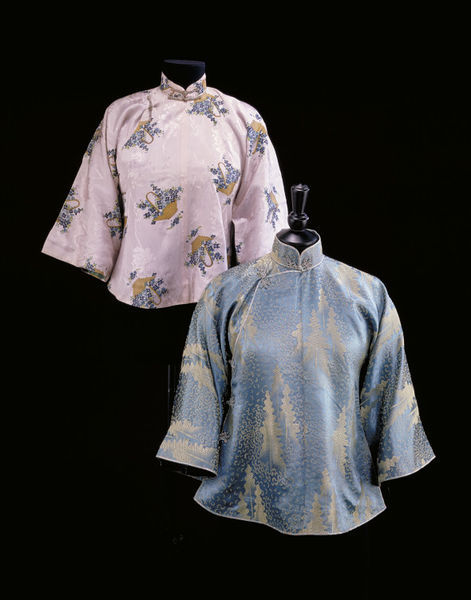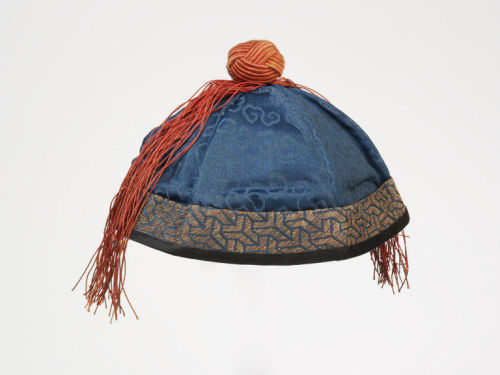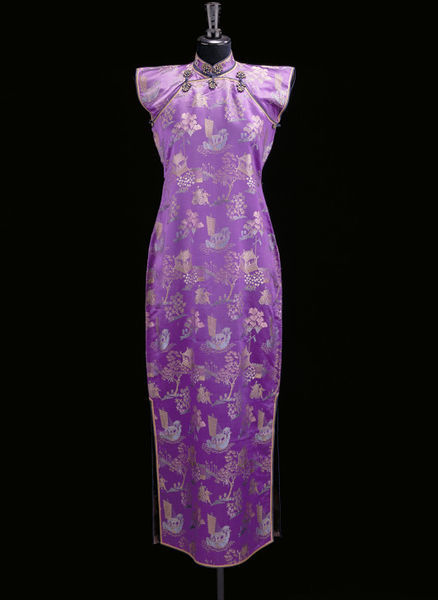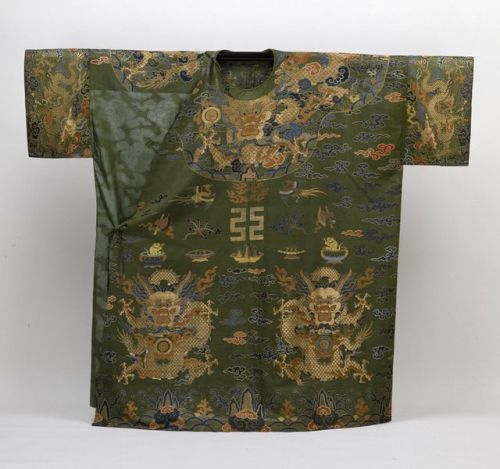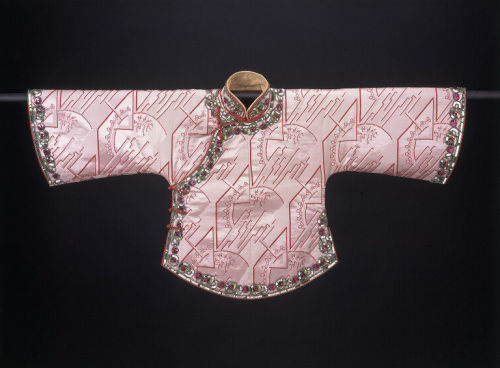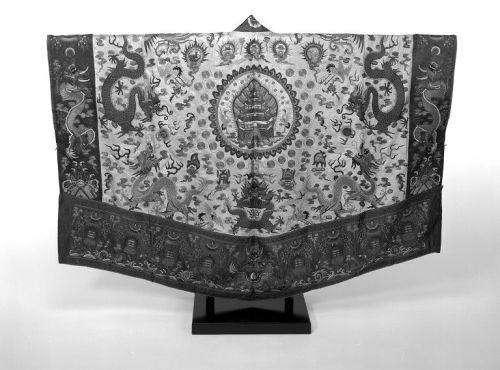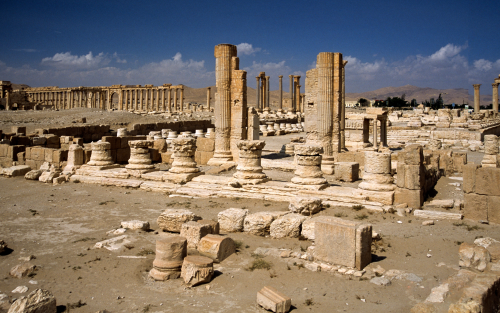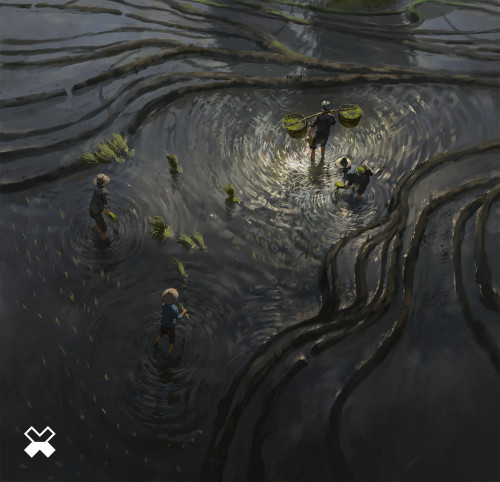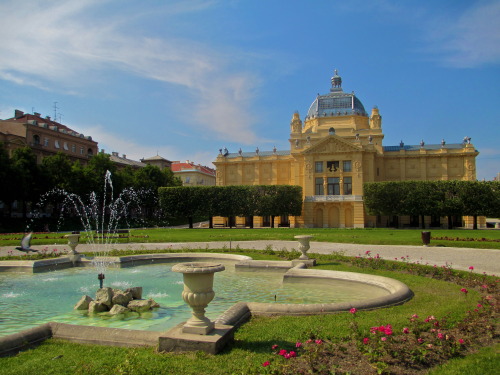#eastern
New Post has been published on https://www.alwayswanderlust.com/georgia-travel-guide/
Georgia Travel Guide: The Shangri-La of Caucasus
The geographic and climatic variety of Georgia makes it an all-season country to visit. Georgian people are fortunate to be living in this fertile edge of the Caucasus. Located at the conjuncture of Western Asia and Eastern Europe, Georgia has always been a beautiful land. Georgian call their country Sakartvelo, “Kartveli” means Georgian in their language. So welcome to the beautiful area of Kartvelian people!
Where is Georgia?
The Black sea is to the west, Russia to the north, and Turkey & Armenia to the south. Tbilisi is the Capital city of Georgia and the largest. A powerful Georgian kingdom existed between the 10th and 13th centuries. However, Georgia has been a victim of invading empires and conquest.
After a long rule of the Turks and Persians, it was annexed by the Russian empire in the 19th century. Eventually, Georgia became independent on April 19, 1991, not long after the fall of the Soviet Union. Lari is the Georgian currency.
Major Cities & their Population
Major Georgian cities include:
Tbilisi – 1,049,498
Kutaisi – 178,338
Batumi – 121,806
Zugdidi – 73,006
Rustavi – 50,000
What is so Fascinating about Georgia?
The northern border of Georgia includes several dramatic mountain roads. These mountainous ranges offer hikes of a few hours and treks of several days. The most crowd-pleasing trek is the four-day route from Mestia to the unbelievably delineated Ushguli. Shkhara (5193m), Georgia’s highest peak, is steeping behind Ushguli. Mountain biking territories are also available in Georgia (bikes available for rent locally). A three-hour road trip to North of Tbilisi leads you to Mount Kazbek (5047m).
Besides, horse-trekking is also popular in Georgia. Another profound thing about Georgia is its language. The Georgian comes with its dominant taste that you might not hear in other languages. The unusual sounds make this language unique. Georgian has its 33-alphabet, including some consonants that are to be articulated in the back of the throat. The alphabets look very much the same. A jiggle in mouth and your “K” can change into “V.” Georgian writing is even more beautiful than the spoken language itself.
Where should you stay in Georgia?
There are a lot of exciting places to stay in Georgia. Hotels and hostels for any needs and budget. It’s always better to stay near the most famous landmarks, so follow your itinerary. There are some interesting urban spaces to stay in, for example, Fabrika Hotel in Tbilisi. If you are seeking luxury, Radisson Blu, Rooms hotels, Crown Plaza Borjomi, or the most luxurious hotel Paragraph are waiting for you.
Georgian cuisine is soothing
Georgian food is deservedly famous among visitors. The popular national dishes include “Khachapuri” (resembles a cheese pie) and “Khinkali” (spiced meat in a dumpling). Dumplings are the most famous in this part of the world. If one wants to enjoy the delicious filling and savory of it, then he must forget a knife and fork because cutting the dumpling would spill the juice and ruin the taste.
Apart from these, Churchkhela is the most eye-catching food of all. It is considered a war food in Georgia because of its proteinous nature. Grape juice is poured over walnuts gently so that it gives the essential taste. Churchkhela is served with coffee at home nowadays.
Georgian Wine
Georgia’s high-quality beer production is famous all around the world. After independence from the Soviet Union, Georgia improved its quality in beer production and introduced its products to the world. Beer is the long-lived tradition in the mountains of Caucasus. Kazbegi, Aluda, Lomisi, Natakhtari, Argo are some of the Georgian beers.
It also has foreign beers, including; Heinekin, Bitburger, Lowenbrau, etc. The ancient tradition of wine production (red and white) makes Georgia the birthplace of it. French and Italian wines are rival to Georgian wine.
Folk Music & Dance
The culture of Georgia lies in its musical folklore. It expresses the beautiful nature, everyday life, and traditional values of Georgia. The most famous forms of Georgian music are church and folk polyphony.
The singers are usually men. The typical Georgian song consists of three male voices. Georgians sing while celebrating events or working. Mravalzheimeri is the most popular song sung at weddings and the new year.
In 1997, NASA sent a Voyager 2 to space with 25 golden melodies. Chakrulo, a classic and old polyphonic Georgian song, is among them. It was also included in the UNESCO list of World Heritage.
Georgian dance contains life in itself. It incorporates various forms of rituals and ceremonies. It expresses a traditional attitude of men towards women. Male dancers need a lot of energy and stamina. A man dances on his tiptoes without any special shoes. A woman in Georgian dance is reserved and tries to stay humble.
“Kartuli” is a traditional dance performed by both the groom and bride at their wedding ceremony. It represents devotion and love to the bride from her soulmate.
Georgian choreography is full of warrior dances. It reflects the history where men had to defend their land against invaders. People symbolically portray unity between soldiers. Example: “Khorumi Dance.”
Religion in Georgia
Around 80% of Georgia’s population is Christian. Most of them belong to the Georgian Orthodox church. Georgia was the 2nd country after Armenia to adopt Christianity as a state religion in 326 CE. In the 5th century, the Bible was translated into the Georgian language. In the earliest of the centuries, Zoroastrianism was commonly practiced in Georgia.
It always remained a Christian majority despite frequent invasions by Muslim rulers. Regardless of the huge influence of Christianity, Georgia has lots of tolerance for other religions as well. The constitution of Georgia provides religious freedom. The country protects the rights of citizens in this regard and allows them to practice their religion.
People from the Southern and the Southwestern parts of the country (like Adjara) are Sunni Muslims. Islam is the 2nd most influential religion. The religion first came during the era of the third caliph, Uthman. Today, Georgia has two major Muslim groups, the Sunni Hanafis and the Ithna Ashariya (mainly from ethnic Azerbaijan community). There are also a small number of Catholics.
Resources in Georgia
Georgia is rich in natural resources. On the southern slope of, deposits of manganese, silver-lead, coal, barite, and marble are found. In some areas, copper, zinc, mercury, arsenic, and marble are mined. Georgia is also known for its rich mineral waters. Mineral waters have equal importance as the other minerals. Almost all kinds of mineral water are found in the country.
The natural spring water creates a situation for the treatment of patients with cardiovascular, endocrine, and digestive system disorders. Another important resource in Georgia is its river network. Out of 26060 rivers, 18109 are located in western Georgia while 7951 in eastern Georgia. It also has thermal waters, which can be very useful in the agriculture and energy sector.
Georgia has around 850 lakes. The lakes are of very diverse origin. The majority of the lakes contain freshwater with a very little amount of salt. The largest lake in volume is Lake Paravani, in-depth – Lake Ritza. These water reserves are very important in terms of agriculture. Flora is also an important resource in the country.
Nearly a third of the land of the country is covered with woods. The amount of this wood and greenery is higher in the mountains. A magnificent variety of herbs can be found in alpine and subalpine meadows in the woods of the Black Sea coast. Trees of oaks, hornbeams, chestnut trees, maples, beeches are found.
Forests contribute to the economy through the production of wood and wood products. The forests are also important for the country’s biodiversity, which provides a unique ecosystem.
More Visitors every Year
Having less than 100,000 visitors annually to around 6.5 million visitors is not just the outcome of it being a nice place to go. It includes various other reasons. The political change in Georgia has resulted in tourist attraction because it has opened itself to the world. Change in the country’s foreign policy has opened doors for tourism. The country’s policymakers have worked a lot in the tourism industry because of its potential in increasing the GDP.
The eye-catching developments have oriented Georgia towards increased tourism. The main issue with tourism is the language barrier. But in recent times, the Government has adopted pro-English policies. It now ranks 45th in the world out 88 for English proficiency, above Chile and China.
One of the easiest ways to increase visitor ratio is just by allowing people to travel to your country. To achieve this goal, the Government has introduced a non-restrictive visa policy. The food supplies in the hotels and the architecture of hotels and restaurants are not 100% assured. In 2015, World Bank loaned around 60 million to the country.
The money was invested, with a specific goal of improving tourism in the Samtskhe-Javakheti and Mtskheta-Mitaneti regions. Previously these regions were out of the tourism circuit. Georgia has improved a lot in the recent past.
Tbilisi – The capital City of Georgia
Tbilisi is the capital of Georgia, with over 1.5 million inhabitants. The old town Tbilisi is a grassed enclosure with houses built around small courts. The newer parts of the capital are of modern architecture. The local art shops, wine houses, family-run guesthouses add to the buzz-life of Tbilisi.
The Paris Wheel in the park is the highest point in Tbilisi. It also has a small amusement park, bars, and restaurants. Couples can enjoy the exuberant landscape in the evening. The park can be easily reached by Bus 124. Tbilisi is considered one of the best clubbing cities in Eastern Europe. Many local bars are expanded across the city. Bars lit up Tbilisi in the night.
What to do in Tbilisiis a matter of taste, decide what you want to do, and Tbilisi can offer you any entertainment and sightseeing. Ancient historical monuments, modern architecture, unique gastronomy, wine, and the best night clubs – make your choice!
All-weather Country
June marks the start of summer and stays up to August. Summers in Georgia can be a little too hot in the capital, with the temperature rising to 30 degrees. This is a perfect time to head to the mountains or coast. During summers, Georgia hosts traditional festivals, such as Open Air, Black Sea Jazz festival, and many other events.
The colors of autumn are a delight to watch in Georgia. It’s cooling down in the lowlands and a pleasant season to enjoy. Georgia has a lot of trees, and the autumn colors are worth watching. Of course, wine is a national passion in Georgia, and grapes are harvested late September to late October.
The Tbilisoba festival is a treat after summers. The festival is celebrated for over a week in October. People enjoy full swing with lots of food, music, dance, and of course, wine. It is advised to participate in the vintage season and harvest some vine. It is freezing in inland areas until February. The winter is from December to March.
There’s an energetic winter sports scene. Ski resorts open up. Skiing in Georgia is cheap as compared to Western Europe and North America. The crowd here is few, and vibes are relaxing. The ski season here lasts until April. Spring comes with a many spring shower in April and May.
The popular rafting season starts on the Aragvi Rivers north of Tbilisi. The best activities in springtime can be hikes, road trips, and a visit to the beautiful lakes in Georgia. Independence Day is also celebrated during this season (May 26). The parade on Rustaveli Avenue is worth watching.
Best Places to Visit
Founded around 1000 BC, Uplistsikhe is located in eastern Georgia. It is about 10 km away from Tbilisi. Uplistsikhe means “Lord’s Fortress,” and it is an abandoned rock-fashioned town that is more than 3000 years old. It is one of the oldest urban settlements in Georgia.
The cave city consisted of a pharmacy, a bakery, and even a prison, and are connected by tunnels. Another darling place to visit in Georgia is the “Katskhi Pillar.” Also known as “the Pillar of Life,” it is a 40 m limestone massive structure. Around the 4th century, this pillar became a place of segregation for the ‘Stylites’ who had a ‘slight’ preoccupation with sitting on top of rocks.
They believed that this process could take them closer to God. How they reached the top and built the church remains a mystery! Another destination of interest in Georgia is Chiatura. It is a small town sheltered between steep valleys and deep gorges. It was founded in the late 1800s. In 1954 the Stalinist Government installed a system of cable cars.
The workers went to the mining destinations with the help of these cable cars. Every corner of the town was connected through these cable cars, and Chiatura was later known as “cable car city.” Some of the cable cars are still used as a means of free public transport. Chiatura is a mysterious and fascinating city where people still feel the demon of the Soviets.
Best things to do
There are a good number of churches in Tbilisi. The Holy Trinity Cathedral is famous among all. Its height is 97.5 m that makes it the 3rd largest in the world. The other two are Saint Isaac’s Cathedral in Saint Petersburg and the Cathedral of Christ the Savior in Moscow. The great Mtatsminda Park is also one of the go-to places in Tbilisi.
You might also want to take a Sulphur bath while you’re in town. They are situated in the Abanotubani district. The Sulphur baths are a great place to relax for two to three hours, especially in the colder months of the year. The price of these baths varies from 30 Lari to 100 Lari. Most of these baths are 24/7 open.
What are You Waiting for?
People who have traveled to Georgia before, find it an exuberant place to visit. Many people who did not initially want to put the country’s visit on their wish list, and ended up booking their tickets and starting their journeys towards other dream places, were later found to be regretful of changing their decision because the reviews from visitors of Georgia were extremely promising and astounding.
Georgia has an eye-catching yet serene theme of green colors, a jazz lifestyle, and a fascinating and welcoming environment. Not only this, but its evergreen people make it even more hospitable and worth visiting with their friendly demeanor towards tourists and foreigners.
Not only this, but you would also be delighted by the flavorful and delicious Georgian cuisine that you would not find anywhere else in the world. The mouth-watering savory taste of dumplings and the delicious Khinkali with a cold beer are themselves waiting for you to come, try them once, and fall in love with them forever.
You would also not want to miss the magnificent historic architecture that it adorns the streets and roads of Georgia and takes you back to see the world through the eyes of those that existed many years before you. The places that we described before are surely exotic to hear about, but we promise you, they are even a greater delight to visit and will surely treat your eyes with their stunning beauty.
So don’t miss out on this, because we assure you that you too will become a fan of this heaven on earth. Hurry up and find the best economical as well as luxurious travel plans and travel with your family and friends on the trip of your lifetime and visit the lush green gorgeous Georgia!
New Post has been published on https://www.alwayswanderlust.com/georgia-travel-guide/
Georgia Travel Guide: The Shangri-La of Caucasus
The geographic and climatic variety of Georgia makes it an all-season country to visit. Georgian people are fortunate to be living in this fertile edge of the Caucasus. Located at the conjuncture of Western Asia and Eastern Europe, Georgia has always been a beautiful land. Georgian call their country Sakartvelo, “Kartveli” means Georgian in their language. So welcome to the beautiful area of Kartvelian people!
Where is Georgia?
The Black sea is to the west, Russia to the north, and Turkey & Armenia to the south. Tbilisi is the Capital city of Georgia and the largest. A powerful Georgian kingdom existed between the 10th and 13th centuries. However, Georgia has been a victim of invading empires and conquest.
After a long rule of the Turks and Persians, it was annexed by the Russian empire in the 19th century. Eventually, Georgia became independent on April 19, 1991, not long after the fall of the Soviet Union. Lari is the Georgian currency.
Major Cities & their Population
Major Georgian cities include:
Tbilisi – 1,049,498
Kutaisi – 178,338
Batumi – 121,806
Zugdidi – 73,006
Rustavi – 50,000
What is so Fascinating about Georgia?
The northern border of Georgia includes several dramatic mountain roads. These mountainous ranges offer hikes of a few hours and treks of several days. The most crowd-pleasing trek is the four-day route from Mestia to the unbelievably delineated Ushguli. Shkhara (5193m), Georgia’s highest peak, is steeping behind Ushguli. Mountain biking territories are also available in Georgia (bikes available for rent locally). A three-hour road trip to North of Tbilisi leads you to Mount Kazbek (5047m).
Besides, horse-trekking is also popular in Georgia. Another profound thing about Georgia is its language. The Georgian comes with its dominant taste that you might not hear in other languages. The unusual sounds make this language unique. Georgian has its 33-alphabet, including some consonants that are to be articulated in the back of the throat. The alphabets look very much the same. A jiggle in mouth and your “K” can change into “V.” Georgian writing is even more beautiful than the spoken language itself.
Where should you stay in Georgia?
There are a lot of exciting places to stay in Georgia. Hotels and hostels for any needs and budget. It’s always better to stay near the most famous landmarks, so follow your itinerary. There are some interesting urban spaces to stay in, for example, Fabrika Hotel in Tbilisi. If you are seeking luxury, Radisson Blu, Rooms hotels, Crown Plaza Borjomi, or the most luxurious hotel Paragraph are waiting for you.
Georgian cuisine is soothing
Georgian food is deservedly famous among visitors. The popular national dishes include “Khachapuri” (resembles a cheese pie) and “Khinkali” (spiced meat in a dumpling). Dumplings are the most famous in this part of the world. If one wants to enjoy the delicious filling and savory of it, then he must forget a knife and fork because cutting the dumpling would spill the juice and ruin the taste.
Apart from these, Churchkhela is the most eye-catching food of all. It is considered a war food in Georgia because of its proteinous nature. Grape juice is poured over walnuts gently so that it gives the essential taste. Churchkhela is served with coffee at home nowadays.
Georgian Wine
Georgia’s high-quality beer production is famous all around the world. After independence from the Soviet Union, Georgia improved its quality in beer production and introduced its products to the world. Beer is the long-lived tradition in the mountains of Caucasus. Kazbegi, Aluda, Lomisi, Natakhtari, Argo are some of the Georgian beers.
It also has foreign beers, including; Heinekin, Bitburger, Lowenbrau, etc. The ancient tradition of wine production (red and white) makes Georgia the birthplace of it. French and Italian wines are rival to Georgian wine.
Folk Music & Dance
The culture of Georgia lies in its musical folklore. It expresses the beautiful nature, everyday life, and traditional values of Georgia. The most famous forms of Georgian music are church and folk polyphony.
The singers are usually men. The typical Georgian song consists of three male voices. Georgians sing while celebrating events or working. Mravalzheimeri is the most popular song sung at weddings and the new year.
In 1997, NASA sent a Voyager 2 to space with 25 golden melodies. Chakrulo, a classic and old polyphonic Georgian song, is among them. It was also included in the UNESCO list of World Heritage.
Georgian dance contains life in itself. It incorporates various forms of rituals and ceremonies. It expresses a traditional attitude of men towards women. Male dancers need a lot of energy and stamina. A man dances on his tiptoes without any special shoes. A woman in Georgian dance is reserved and tries to stay humble.
“Kartuli” is a traditional dance performed by both the groom and bride at their wedding ceremony. It represents devotion and love to the bride from her soulmate.
Georgian choreography is full of warrior dances. It reflects the history where men had to defend their land against invaders. People symbolically portray unity between soldiers. Example: “Khorumi Dance.”
Religion in Georgia
Around 80% of Georgia’s population is Christian. Most of them belong to the Georgian Orthodox church. Georgia was the 2nd country after Armenia to adopt Christianity as a state religion in 326 CE. In the 5th century, the Bible was translated into the Georgian language. In the earliest of the centuries, Zoroastrianism was commonly practiced in Georgia.
It always remained a Christian majority despite frequent invasions by Muslim rulers. Regardless of the huge influence of Christianity, Georgia has lots of tolerance for other religions as well. The constitution of Georgia provides religious freedom. The country protects the rights of citizens in this regard and allows them to practice their religion.
People from the Southern and the Southwestern parts of the country (like Adjara) are Sunni Muslims. Islam is the 2nd most influential religion. The religion first came during the era of the third caliph, Uthman. Today, Georgia has two major Muslim groups, the Sunni Hanafis and the Ithna Ashariya (mainly from ethnic Azerbaijan community). There are also a small number of Catholics.
Resources in Georgia
Georgia is rich in natural resources. On the southern slope of, deposits of manganese, silver-lead, coal, barite, and marble are found. In some areas, copper, zinc, mercury, arsenic, and marble are mined. Georgia is also known for its rich mineral waters. Mineral waters have equal importance as the other minerals. Almost all kinds of mineral water are found in the country.
The natural spring water creates a situation for the treatment of patients with cardiovascular, endocrine, and digestive system disorders. Another important resource in Georgia is its river network. Out of 26060 rivers, 18109 are located in western Georgia while 7951 in eastern Georgia. It also has thermal waters, which can be very useful in the agriculture and energy sector.
Georgia has around 850 lakes. The lakes are of very diverse origin. The majority of the lakes contain freshwater with a very little amount of salt. The largest lake in volume is Lake Paravani, in-depth – Lake Ritza. These water reserves are very important in terms of agriculture. Flora is also an important resource in the country.
Nearly a third of the land of the country is covered with woods. The amount of this wood and greenery is higher in the mountains. A magnificent variety of herbs can be found in alpine and subalpine meadows in the woods of the Black Sea coast. Trees of oaks, hornbeams, chestnut trees, maples, beeches are found.
Forests contribute to the economy through the production of wood and wood products. The forests are also important for the country’s biodiversity, which provides a unique ecosystem.
More Visitors every Year
Having less than 100,000 visitors annually to around 6.5 million visitors is not just the outcome of it being a nice place to go. It includes various other reasons. The political change in Georgia has resulted in tourist attraction because it has opened itself to the world. Change in the country’s foreign policy has opened doors for tourism. The country’s policymakers have worked a lot in the tourism industry because of its potential in increasing the GDP.
The eye-catching developments have oriented Georgia towards increased tourism. The main issue with tourism is the language barrier. But in recent times, the Government has adopted pro-English policies. It now ranks 45th in the world out 88 for English proficiency, above Chile and China.
One of the easiest ways to increase visitor ratio is just by allowing people to travel to your country. To achieve this goal, the Government has introduced a non-restrictive visa policy. The food supplies in the hotels and the architecture of hotels and restaurants are not 100% assured. In 2015, World Bank loaned around 60 million to the country.
The money was invested, with a specific goal of improving tourism in the Samtskhe-Javakheti and Mtskheta-Mitaneti regions. Previously these regions were out of the tourism circuit. Georgia has improved a lot in the recent past.
Tbilisi – The capital City of Georgia
Tbilisi is the capital of Georgia, with over 1.5 million inhabitants. The old town Tbilisi is a grassed enclosure with houses built around small courts. The newer parts of the capital are of modern architecture. The local art shops, wine houses, family-run guesthouses add to the buzz-life of Tbilisi.
The Paris Wheel in the park is the highest point in Tbilisi. It also has a small amusement park, bars, and restaurants. Couples can enjoy the exuberant landscape in the evening. The park can be easily reached by Bus 124. Tbilisi is considered one of the best clubbing cities in Eastern Europe. Many local bars are expanded across the city. Bars lit up Tbilisi in the night.
What to do in Tbilisiis a matter of taste, decide what you want to do, and Tbilisi can offer you any entertainment and sightseeing. Ancient historical monuments, modern architecture, unique gastronomy, wine, and the best night clubs – make your choice!
All-weather Country
June marks the start of summer and stays up to August. Summers in Georgia can be a little too hot in the capital, with the temperature rising to 30 degrees. This is a perfect time to head to the mountains or coast. During summers, Georgia hosts traditional festivals, such as Open Air, Black Sea Jazz festival, and many other events.
The colors of autumn are a delight to watch in Georgia. It’s cooling down in the lowlands and a pleasant season to enjoy. Georgia has a lot of trees, and the autumn colors are worth watching. Of course, wine is a national passion in Georgia, and grapes are harvested late September to late October.
The Tbilisoba festival is a treat after summers. The festival is celebrated for over a week in October. People enjoy full swing with lots of food, music, dance, and of course, wine. It is advised to participate in the vintage season and harvest some vine. It is freezing in inland areas until February. The winter is from December to March.
There’s an energetic winter sports scene. Ski resorts open up. Skiing in Georgia is cheap as compared to Western Europe and North America. The crowd here is few, and vibes are relaxing. The ski season here lasts until April. Spring comes with a many spring shower in April and May.
The popular rafting season starts on the Aragvi Rivers north of Tbilisi. The best activities in springtime can be hikes, road trips, and a visit to the beautiful lakes in Georgia. Independence Day is also celebrated during this season (May 26). The parade on Rustaveli Avenue is worth watching.
Best Places to Visit
Founded around 1000 BC, Uplistsikhe is located in eastern Georgia. It is about 10 km away from Tbilisi. Uplistsikhe means “Lord’s Fortress,” and it is an abandoned rock-fashioned town that is more than 3000 years old. It is one of the oldest urban settlements in Georgia.
The cave city consisted of a pharmacy, a bakery, and even a prison, and are connected by tunnels. Another darling place to visit in Georgia is the “Katskhi Pillar.” Also known as “the Pillar of Life,” it is a 40 m limestone massive structure. Around the 4th century, this pillar became a place of segregation for the ‘Stylites’ who had a ‘slight’ preoccupation with sitting on top of rocks.
They believed that this process could take them closer to God. How they reached the top and built the church remains a mystery! Another destination of interest in Georgia is Chiatura. It is a small town sheltered between steep valleys and deep gorges. It was founded in the late 1800s. In 1954 the Stalinist Government installed a system of cable cars.
The workers went to the mining destinations with the help of these cable cars. Every corner of the town was connected through these cable cars, and Chiatura was later known as “cable car city.” Some of the cable cars are still used as a means of free public transport. Chiatura is a mysterious and fascinating city where people still feel the demon of the Soviets.
Best things to do
There are a good number of churches in Tbilisi. The Holy Trinity Cathedral is famous among all. Its height is 97.5 m that makes it the 3rd largest in the world. The other two are Saint Isaac’s Cathedral in Saint Petersburg and the Cathedral of Christ the Savior in Moscow. The great Mtatsminda Park is also one of the go-to places in Tbilisi.
You might also want to take a Sulphur bath while you’re in town. They are situated in the Abanotubani district. The Sulphur baths are a great place to relax for two to three hours, especially in the colder months of the year. The price of these baths varies from 30 Lari to 100 Lari. Most of these baths are 24/7 open.
What are You Waiting for?
People who have traveled to Georgia before, find it an exuberant place to visit. Many people who did not initially want to put the country’s visit on their wish list, and ended up booking their tickets and starting their journeys towards other dream places, were later found to be regretful of changing their decision because the reviews from visitors of Georgia were extremely promising and astounding.
Georgia has an eye-catching yet serene theme of green colors, a jazz lifestyle, and a fascinating and welcoming environment. Not only this, but its evergreen people make it even more hospitable and worth visiting with their friendly demeanor towards tourists and foreigners.
Not only this, but you would also be delighted by the flavorful and delicious Georgian cuisine that you would not find anywhere else in the world. The mouth-watering savory taste of dumplings and the delicious Khinkali with a cold beer are themselves waiting for you to come, try them once, and fall in love with them forever.
You would also not want to miss the magnificent historic architecture that it adorns the streets and roads of Georgia and takes you back to see the world through the eyes of those that existed many years before you. The places that we described before are surely exotic to hear about, but we promise you, they are even a greater delight to visit and will surely treat your eyes with their stunning beauty.
So don’t miss out on this, because we assure you that you too will become a fan of this heaven on earth. Hurry up and find the best economical as well as luxurious travel plans and travel with your family and friends on the trip of your lifetime and visit the lush green gorgeous Georgia!
Ready To Visit Georgia?
“Servants of the Dragon” by concoction
http://www.furaffinity.net/user/concoction/
http://www.furaffinity.net/view/8232857/
Post link
Han Woman’s Jacket (Informal)
1850-1900
China
Silk velvet, with embroidered edgings on satin ground
Summary: This garment is a three-quarter-length jacket worn by a Chinese woman with a wraparound skirt beneath. The large-scale peony and butterfly design on the velvet part of the coat contrasts with the applied edgings, which are decorated with smaller embroidery motifs in a variety of colours.
Post link
Jifu (Auspicious Robe)
ca. 1821-1850
China
Silk embroidery on twill weave silk
Summary:This type of robe functions as a type of semi-formal court robe for a woman, and the turquoise color suggests this may have been worn by an imperial consort of a lower rank.
Post link
Robe
lath 18th century-early 19th century
China
Satin damask, lined with silk
Summary: This yellow robe is the kind of garment that was worn by wealthy Chinese men. It is particularly soft and supple to the touch. The pronounced sheen on the satin enables the dragon roundels to stand out distinctly. The design has been matched across the seam and the side fastening.
Post link
Jackets
Republic Period (1920s)
Hong Kong, China
V&A Museum
Silk satin ground with self patterned design.
Summary: The qipao was traditionally the costume of the Manchu people, and the style was adopted by Chinese women from the Qing Dynasty. By the twentieth century the shapes and styles of the traditional dress were changing. Neat, slightly waisted jackets paired with above-ankle skirts were prevalent in the 1920s.
Post link
Cap
Qing Dynasty (1875-1911)
China
Woven Silk
Summary: The relative small size of this cap suggests it would have been made for and worn by a boy. Although younger children tended to have fun and colorful hats decorated with images of animals, as they became older it was common practice for children to wear smaller versions of adults’ clothing, as this cap was intended to be.
Headgear were not merely part of a man or boy’s outfit: especially in the northerly parts of China they were also important for keeping the head warm in colder climates.
Post link
Qipao/Cheongsam
20th Century (Probably1960s)
Hong Kong, China
Woven silk
Summary: Woman’s dress (known as a cheongsam in Cantonese or a qipao in Mandarin) made from classic Chinese woven silk with a design of junks and pavilions among traditional trees. It is tailored to accentuate the waist.
The stiffened collar is closed with a triple floret arrangement.
On its own, the qipao is itself a modernised form of the dress worn by Manchu and Han women of the Qing dynasty (1644-1911). During the Republican period (1911-1949), the qipao was promoted as the dress of modern China, identifiably ‘Chinese’ on the one hand, and moving away from 'feudal’ associations with the imperial past.
Post link
Robe
Qing Dynasty (ca. 1790)
China
Brocaded silk damask and metallic thread
V&A Museum
Summary: This robe was made to adorn a statue of the Chinese deity, Guan Di. Guan Di, also known as Guan Yu, was an important General of the Eastern Han and Three Kingdoms era. On this robe we see symbols from the twelve insignia used by royalty (such as the symmetrical fu symbol in the centre of the robe; millet; flames; mountains; axes and pheasants). Since he was considered to be equal to an emperor, it is woven with many of the symbols seen on the emperor’s yellow clothes of the same period.
This robe would have been one of a set of clothes of different colors made for the same statue, to be changed according to seasons.
Post link
Daoist Robe
Qing Dynasty (19th Century)
China
Satin silk with embroidery in silks and gold thread
Summary: The robe would have been worn during a religious ceremony. It is embroidered with Taoist symbols, including the Yin and Yang (T'ai Chi) and the Eight Trigrams (Pa Kua). Most of these Taoist robes are made from full widths of uncut silk with limited seaming, but this one is unusual in having sleeves and side seams.Silk satin embroidered with silk and gold thread.
Post link
Jacket
1920s
Shanghai, China
Woven silk with sequin edging
Summary: This sparkling jacket would have been worn by a fashionable woman in urban China in the 1920s or 1930s, possibly with a matching skirt or else a plain black one. The collar is lined with orange velvet.
Post link
Daoist Robe of Descent
China
18th-19th Century
Embroidered silk satin in coloured silk and gold threads
Post link
Flag of some middle eastern country probably
from /r/vexillologycirclejerkTop comment: Ha! I just bought a ball cap with this flag on it JUST to troll Islamophobic ‘paytreeyots’. ::grin::
Post link


Temple of Nabu
Palmyra (Tadmor), Syria
2nd century CE
The temple was a Corinthian Hexastyle Peripteral temple dedicated to Mesopotamian god of wisdom and writing, and was Eastern in its plan; the outer enclosure’s propylaea led to a 20-by-9-metre podium through a portico of which the bases of the columns survives. The peristyle cella opened onto an outdoor altar.
The temple is characterized by its eastern style and architectural and cultural features which still exist at the site, according to Assaf.
He clarified that there are three entrances towards the long street and a main entrance in the southern side, surrounded by corridors and columns with Corinthian crowns with decorations on either side and three rooms directly connected to the inner hallway, which leads to a courtyard with a temple in center.


Post link











